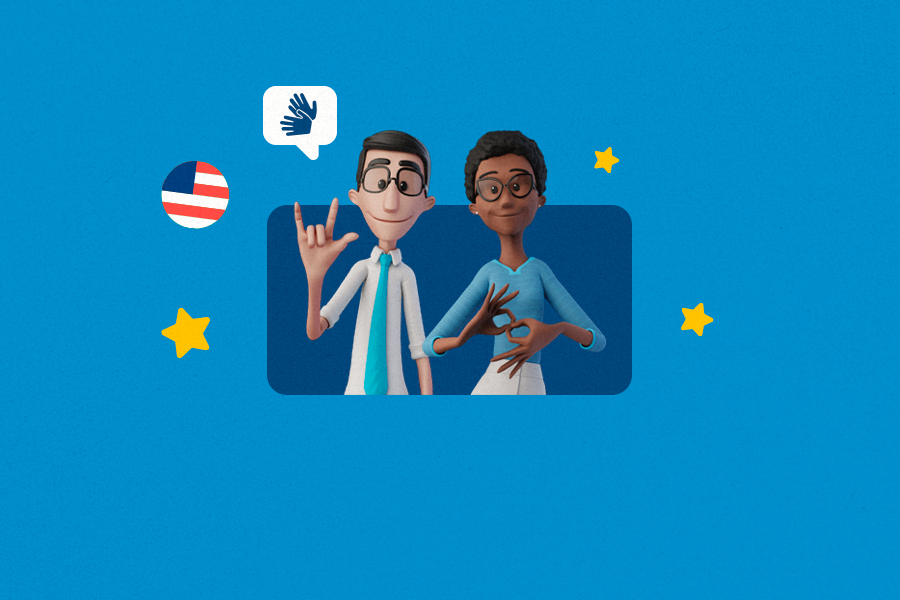
5 Interesting Facts about Sign Languages

Sign languages are the fundamental means of communication for those with hearing or speech impairments. Apart from that, they are also the primary carriers of Deaf culture, with different beliefs, behaviors, literary traditions, history, and values.
More than 70 million deaf people around the world use sign languages to communicate. Sign languages are becoming increasingly popular even with hearing individuals. With so much to learn and experience via sign languages, there’s no wonder why.
How does sign language grammar work? What’s the role of eyebrows? And how can you get your own name sign? Read on to find answers to these questions – and more you might not know!
- Different countries have different sign languages
What many people often don’t realize is that there’s no universal sign language. In fact, there are somewhere between 138 and 300 different sign languages used globally today.
This means that different countries are accustomed to different forms of sign language. This is where you might ask: Wouldn’t it be better to have just one common sign language? Definitely not! Different sign languages developed organically in diverse groups of people around the world and evolved over time. Rather than being artificial or imposed, all of these represent the cultural richness of the deaf community.
Some of the most famous sign languages are ASL (American Sign Language), FSL (French Sign Language) and Libras (Brazilian Sign Language). Naturally, all of these have unique signs and quirks – so which one will you choose?
- Body language is extremely important when signing
Sign languages don’t only rely on signs; they are way more complex than just hand gestures! Facial expressions, hand movement and position, gestures and body language all play a key role. In fact, these physical expressions are just as important as rhythm and tone in spoken languages. They can reveal a lot about the emotion or the mood of the communicator.
Actually, facial expressions are so important that without them, some signs would become indistinguishable. For example, in ASL, there are signs for “know” and “don’t know” that require facial movements to make it clear which one you’re referring to.
- Signing has its own grammar
Sign languages also have clearly defined rules for well-formed sentences. They can use the space in front of the signer to show who did what to whom by pointing. But some verbs point to both the subject and object of the verb, some only to the object, and some don’t point at all.
For example, in ASL, a well-formed question requires a specific eyebrow position! So your eyebrows should ideally move down for a W question (what, who, where, why, and when) and up for a yes/no question. Obviously, incorrect grammar will result in confusion, just like in spoken languages – or it may make you seem like you have a foreign accent!
- Deaf people have name signs
You probably know that instead of phonemes and spoken words, signs are used in all types of sign language communication. This means they are like “names” used to refer to objects, emotions, companies, and even people!
So deaf people also have their own ‘name signs’ – instead of signing out the individual letters of their name, they use a single sign to refer to themselves. These name signs are unique to each individual and can be compared to a nickname. People often choose a sign name that is linked to their hobby, job, or personal characteristics.
Hearing people can actually also have name signs. Normally, they are given to those who have interacted with the Deaf community for some time to be considered a part of it. If you are a hearing person and want your own name sign, just make sure not to rush the process – by asking for it prematurely, you risk coming across as impolite.
- Sign language is rich, beautiful, and versatile
Deaf people don’t see deafness as a disability, but rather as a difference in human experience. They take pride in their identity and realize that Deaf culture is one-of-a-kind – anyone who understands this can enter a whole new world!
Did you know that there are many forms of art expressed through sign language? For example, deaf poetry is definitely something worth exploring. But again, there’s so much more. Sign languages are also incredibly versatile and are also used by people with autism and down syndrome.
The popularity of sign languages is constantly growing and concepts like digital accessibility help bridge the gap between the Deaf and the hearing community and encourage them to learn and exchange with each other more easily than ever before.
These are just some of the fascinating facts about sign languages, so the best way to find out more is simply by trying to learn! Sign languages are generally not considered difficult and there are many tools to get you started, including books, videos, online courses, or apps like Hand Talk that can guide you along the way!
If you want to explore more related topics, make sure to browse our blog!


